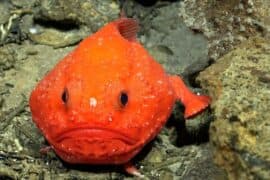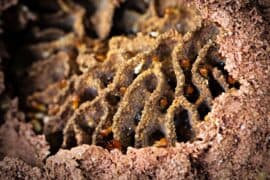Nursehound
(Scyliorhinus cervigoni)
Description
The nursehound (Scyliorhinus stellaris), also known as the large-spotted dogfish, greater spotted dogfish or bull huss, is a species of catshark, belonging to the family Scyliorhinidae, found in the northeastern Atlantic Ocean. It is generally found among rocks or algae at a depth of 20-60 m (66-197 ft). Growing up to 1.6 m (5.2 ft) long, the nursehound has a robust body with a broad, rounded head and two dorsal fins placed far back. It shares its range with the more common and closely related small-spotted catshark (S. canicula), which it resembles in appearance but can be distinguished from, in having larger spots and nasal skin flaps that do not extend to the mouth. Nursehounds have nocturnal habits and generally hide inside small holes during the day, often associating with other members of its species. A benthic predator, it feeds on a range of bony fishes, smaller sharks, crustaceans, and cephalopods. Like other catsharks, the nursehound is oviparous in reproduction. Females deposit large, thick-walled egg cases, two at a time, from March to October, securing them to bunches of seaweed. The eggs take 7-12 months to hatch. Nursehounds are marketed as food in several European countries under various names, including "flake", "catfish", "rock eel", and "rock salmon". It was once also valued for its rough skin (called "rubskin"), which was used as an abrasive. The International Union for Conservation of Nature (IUCN) has assessed the nursehound as Vulnerable, as its population in the Mediterranean Sea seems to have declined substantially from overfishing. The nursehound is found in the northeastern Atlantic from southern Norway and Sweden to Senegal, including off the British Isles, throughout the Mediterranean Sea, and the Canary Islands. It may occur as far south as the mouth of the Congo River, though these West African records may represent misidentifications of the West African catshark (S. cervigoni). Its range seems to be rather patchy, particularly around offshore islands, where there are small local populations with limited exchange between them. The nursehound can be found from the intertidal zone to a depth of 400 m (1,300 ft), though it is most common between 20 m (66 ft) and 60-125 m (197-410 ft). This bottom-dwelling species prefers quiet water over rough or rocky terrain, including sites with algal cover. In the Mediterranean, it favors algae-covered coral.
Taxonomic tree:







